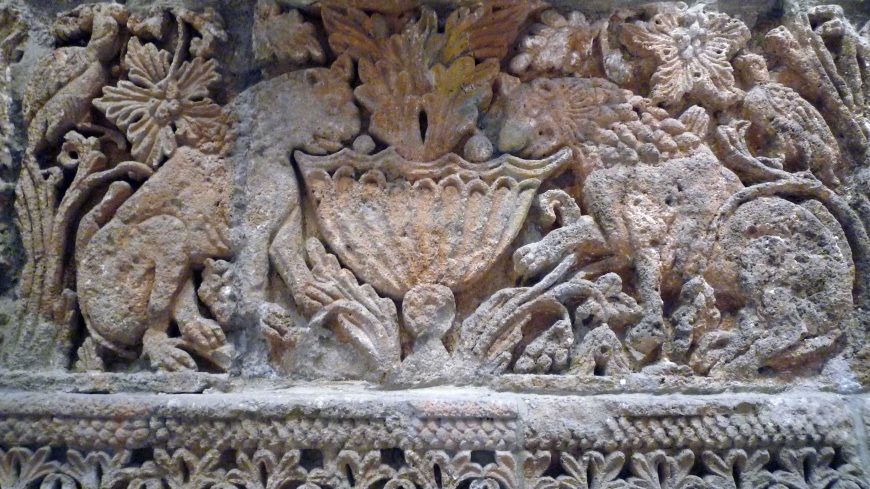
The historical record of Muslim societies can be read in two different ways: normative and empirical. The normative readings accepts a priori the notion that there is one Muslim global community (Umma) endowed with one central authority (Khilāfa or Caliphate).
THE LEGITIMACY OF this reading derives solely from its status as successor to the rule of the Prophet. History is, therefore, the account of the fulfillment of, and aberrations from, this ideal. In the maximalist version of this normative reading, the fulfillment begins with the Prophet’s flight from Mecca to Medina in 622 and doesn’t end until 1924 with the overthrow of the last Ottoman sultan, who held the Caliphate title. The aberration of an Umma without a Khilāfa has lasted, accordingly, just a little over eight decades. In the minimalist version, the fulfillment was a brief period of fewer than four decades, from 622 to the end of the reign of the fourth Rightly-Guided Caliph in 661, and all subsequent history has been a succession of aberrations. Elemental antecedents to these two modern versions of the normative readings are rooted in the scholastic tradition of Islamic jurisprudence, with the understanding that supports the maximalist version being more prominent.
The philological efforts of Western Orientalists, relying primarily on the output of the scholastic tradition—and corresponding chronologically to the reordering of the political forms of Muslim societies in the nineteenth and twentieth centuries—provided a textually biased view favoring the normative reading. Islamist thinkers today still productively utilize this work to confirm components of their own ideology. More significantly, the notion that Arab-Islamic civilization had a Golden Age that should be emulated and restored—a view that became prevalent in the nineteenth century Nahḍa, or Arabian renaissance period—contributed to the idea that the present day is an aberration. This concept has been subsequently modified and amplified by Islamist theoreticians.
Western Orientalists provided a textually biased view favoring the normative reading
An empirical reading of Muslim history reveals a considerably more nuanced reality. Contrary to Islamic scholars’ scarce descriptions of—and/or prescriptions for—an Islamic political model that established a template for the rule of the Khilāfa government, the Umma was historically divided into a multiplicity of Islamic states overwhelmingly dominated by dynastic rule. The nature of the relationship between the rulers and the ruled in these states was based on either coercive force or paternalism and quasi-filial loyalism. Even the latter was largely adversarial. While granting obligatory recognition to the autocratic ruling powers, the subjects of the Muslim states were primarily concerned with reducing their dual burden of taxation and conscription. Islam, meanwhile, served to cement the relationship between state and society through ritualistic practices that fostered pietism and justified the political quietism that dominated much of the Muslim environment.
The empirical record of Islamic rule
Dynastic paternalism, in fact—though virtually ignored by the scant political reflections of classical Islamic thinkers—has provided consistent and productive rule in the history of the Muslim state. Only the brief episode of the first four Caliphs partially deviated from this pattern. (The first two Caliphs were the Prophet’s fathers-in-law, the last two his sons-in-law; the Prophet himself had no male heir.) The fourth Caliph, Ali, sought to formalize dynastic paternalism to the advantage of his progeny, and his failure to do so led to the strict dynastic theological paternalism of Twelver Shiism. Among Sunnis, however, the dynastic paternalism model has not been seriously challenged since the advent of the Umayyads in the late seventh century. Even the Mamluk slave-soldier state that emerged in the thirteenth century kept dynastic paternalism as a referential framework, with the Abbasid Caliphs providing the nominal façade. With the Ottoman conquest of the Muslim heartland in the sixteenth century, actual dynastic paternalism was restored.
Today the notion that Islam is a total system in which religion and politics are intertwined is almost universally accepted.
In the twentieth-century nation-state system, the Arab state emerged in both its monarchic and “republican” versions as a direct continuation of dynastic paternalism, modified—often merely in form—to yield a statist paternalism. In statist paternalism the dynasty is replaced, in some aspects, by the nation-state. The etymology of the word dawla is revealing: in modern Arabic usage it refers to “state;” in premodern usage it indicates “dynasty.”
Today the notion that Islam is a total system in which religion and politics are intertwined, the sacred and the profane merged, is almost universally accepted. Even those attempting to identify and promote a “moderate” Islam strive to locate hybrid forms in which the presumed fusion between religion and politics has not been completed or, alternatively, to encourage reforms that would help disengage politics from religion. While this understanding does indeed reflect the state of current affairs, it is important to recognize that the empirical reading does not confirm this state as representative of the Islamic historical and social record. It is, instead, a recent phenomenon that can be traced back to the nineteenth-century Nahḍa movement, which itself saw modernity as a European import, and attempted to appropriate it for Arab or Muslim purposes.

Suggested Reading
Orientalism and the historicization of the Islamic heritage – 1
Since the Nahḍa, Islam, as a religious system, has undergone massive changes fueled by both intrinsic and extrinsic factors, ranging from the assimilation of the new, globally induced nation-state system to the unexpected wealth generated by oil revenues. The fusion of local Egyptian and Saudi forms of Islamism is itself the result of two intersecting trajectories in Arab political thought—a longer trajectory that approximates a virtual “Reformation” in Islam, and a shorter trajectory that expresses the failure of a second “Renaissance” in Arab culture.
Main image: Façade detail from the Umayyad palace of Mashatta c. 743-44

